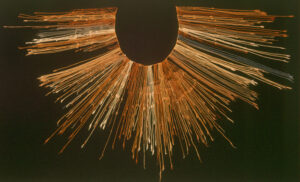The 1800s saw a dramatic shift in the political, social, and cultural landscape. The century was characterized by a succession of large-scale conflicts, the emergence of science and industrialism, and changes within the spheres of gender, class, and race. Mary Seacole was both a product of her time and a figure that stands out immensely.
Background
Mary Seacole (formerly Mary Jane Grant) was born as a free woman in November 1805 to a Creole Jamaican mother and a Scottish soldier in the British Army. She lived with her mother in Jamaica and the pair maintained a famous boarding house in Kingston called Blundell Hall. There, people from all walks of life passed through.
Blundell Hall also housed a multitude of sick individuals. Seacole learned the art of healing and medicine from a young age, picking up skills and knowledge from her mother who was a medicine woman (or “doctress” as the Jamaicans called her) as well as foreign surgeons. Before graduating to human patients, Seacole practiced her newfound skills on her toys and on pets.

Mary Seacole in 1873. Photo: Maull & Company (1873)
For someone so young, she faced deadly diseases fearlessly. In particular, yellow fever was very common on the island at the time. Her mother taught her simple but effective healthcare techniques. She learned to keep patients hydrated, sanitize wounds and instruments, and use warm compresses.
Notably, Seacole greatly disliked opium use, citing it as a slippery slope to death. She had an affinity for mustard, utilizing mustard emetics and plasters. In her book, she stated: “I never neglected to apply mustard poultices to the stomach, spine, and neck, and particularly, to keep my patient warm about the region of the heart.”
But despite becoming well-versed in traditional West African/Caribbean herbal remedies, her desire to explore the world beyond the boarding house was strong enough to prompt her to begin traveling on her own.
Travels
Seacole started traveling in the 1820s, going to England frequently where she sold West Indian goods. Seacole also traveled back to the Caribbean to visit home, Haiti, Cuba, and the Bahamas.
She married a man named Edwin Seacole in 1836 but lost him to illness eight years later. She never remarried and chose to throw herself into her work treating the sick in Jamaica. In the 1850s, cholera swept the island and she assisted with healthcare efforts.
She turned her attention to Panama in 1851. Panama had become a lucrative business center, with more opportunities and freedoms. She described it as a place where runaway slaves and freed people “were generally superior men…they soon rose to positions of eminence in New Granada.”
Seacole opened her iconic, multipurpose “British Hotel” in Panama. The hotel had several rooms, a restaurant, and even a barbershop. However, her personal and professional goals were overshadowed by the cholera epidemic. She put her life on hold to tend to the infected, eventually contracting the disease.
Thankfully, she survived and returned home, only to discover an outbreak of yellow fever in Jamaica. Treating patients, she became famous as the “yellow doctress.” Meanwhile, she continued traveling back and forth to London in the hopes of improving her financial situation.

Florence Nightingale, Mary Seacole’s contemporary. Photo: Florencenightingale.co.uk
However, her medical career took another dramatic turn when she decided to become a nurse on the frontlines of the Crimean War. She initially applied to serve with the famous Florence Nightingale, but army officials denied her request. Historians believe racism was involved.
Yet, Seacole refused to take no for an answer. She financed her own travel to Crimea and spent over £800 setting up her British Hotel. There, she nursed hundreds of soldiers back to health or stayed with them in their final moments.
But her work in Crimea (along with some unlucky business ventures after) effectively bankrupted her. Thankfully, the kindness of some former patients helped her to pull through a sticky monetary situation.
Wonderful adventures
The story of her life became a bestseller. Travel writing, particularly from women, started to gain popularity during the Victorian era. Seacole wrote her autobiography to generate some income, recounting her life experiences in a 200-page book with color, passion, and enthusiasm.
The book explores her life in Jamaica, her observations of the other Caribbean islands, Panama, and finally Crimea.
Legacy
Seacole’s nursing style combined the medicine of two worlds, the Caribbean and Europe. This mix of traditional and modern nursing techniques saved many lives. Her tireless work during the war earned her the respect of the British Army officers. When she found herself in economic hardship after the war, the soldiers held a fundraiser for her. Even Queen Victoria pitched in to support her.
Over the years, academics have debated Seacole’s legacy. Some claim that she was in favor of British imperialism, while others hail her as an important post-emancipation literary figure. Whichever side of the fence you sit on, Seacole made a pronounced mark on society. Evelyn J. Hawthorne describes her as “transgressing gender, race, and class roles as an adventuring businesswoman in Jamaica, London, Haiti, New Granada, and Cuba as a female who, undaunted by the horrors of the battlefield, deployed herself to the Crimean War, this heroine is extraordinary by any standard.”






